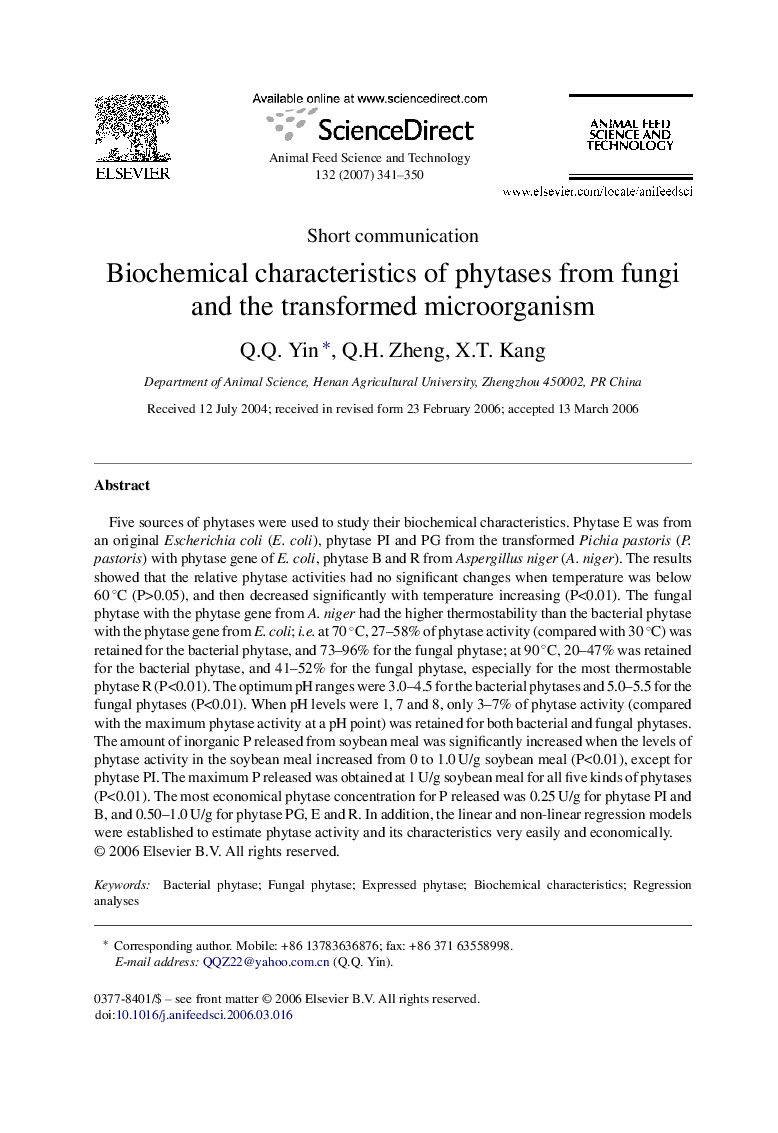| Article ID | Journal | Published Year | Pages | File Type |
|---|---|---|---|---|
| 2421103 | Animal Feed Science and Technology | 2007 | 10 Pages |
Five sources of phytases were used to study their biochemical characteristics. Phytase E was from an original Escherichia coli (E. coli), phytase PI and PG from the transformed Pichia pastoris (P. pastoris) with phytase gene of E. coli, phytase B and R from Aspergillus niger (A. niger). The results showed that the relative phytase activities had no significant changes when temperature was below 60 °C (P>0.05), and then decreased significantly with temperature increasing (P<0.01). The fungal phytase with the phytase gene from A. niger had the higher thermostability than the bacterial phytase with the phytase gene from E. coli; i.e. at 70 °C, 27–58% of phytase activity (compared with 30 °C) was retained for the bacterial phytase, and 73–96% for the fungal phytase; at 90 °C, 20–47% was retained for the bacterial phytase, and 41–52% for the fungal phytase, especially for the most thermostable phytase R (P<0.01). The optimum pH ranges were 3.0–4.5 for the bacterial phytases and 5.0–5.5 for the fungal phytases (P<0.01). When pH levels were 1, 7 and 8, only 3–7% of phytase activity (compared with the maximum phytase activity at a pH point) was retained for both bacterial and fungal phytases. The amount of inorganic P released from soybean meal was significantly increased when the levels of phytase activity in the soybean meal increased from 0 to 1.0 U/g soybean meal (P<0.01), except for phytase PI. The maximum P released was obtained at 1 U/g soybean meal for all five kinds of phytases (P<0.01). The most economical phytase concentration for P released was 0.25 U/g for phytase PI and B, and 0.50–1.0 U/g for phytase PG, E and R. In addition, the linear and non-linear regression models were established to estimate phytase activity and its characteristics very easily and economically.
